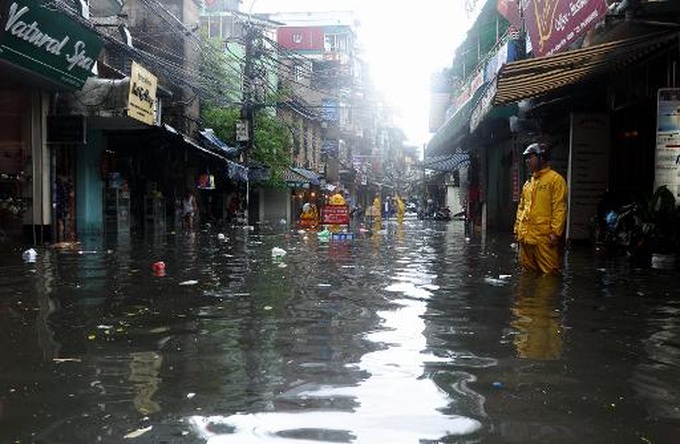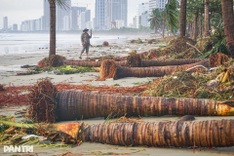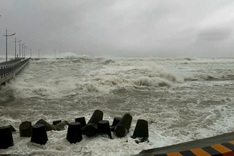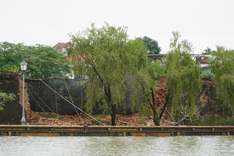 |
| A worker from the municipal environmental service walks on a flooded street in Hanoi on August 8, 2013 following a typhoon that hit Vietnam |
During this time, the surface waters of the western Pacific were much warmer than the central and eastern parts of the ocean, they found.
This temperature difference, also called a gradient, went hand-in-hand with changes to a strong wind system over the Pacific called the Walker circulation.
The result was that cyclones tended to follow the line of the East Asian coast, from the East Sea upwards, before making landfall in China, Japan and Korea -- by which time they had reached their maximum punch.
The change also meant that more cyclones generated in the northern part of the East Sea.
As a result, storms headed for southern China, Vietnam or Taiwan began life too close to land to build up to maximum speed by the time they reached the coast.
More work is needed to confirm whether the temperature gradient is a result of man-induced global warming or a natural variation of a kind that lasts decades.
"If the past changes of large-scale environments are evidence, or a result of, global warming, it can be assumed that in the future more catastrophic tropical cyclones will strike East Asia than ever before," said Ho.
The investigation appears in Environmental Research Letters, a journal published Britain's Institute of Physics.




















